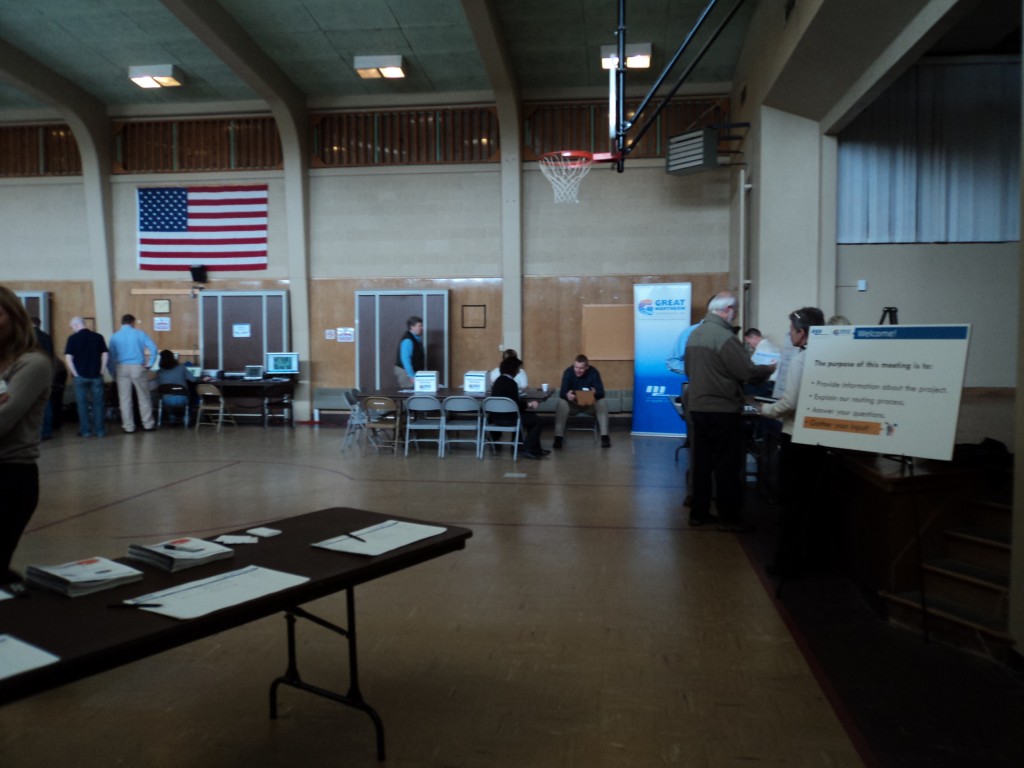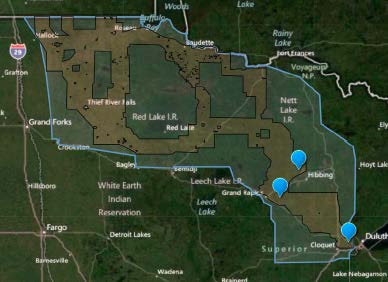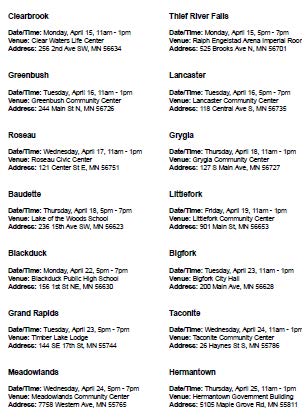Buy the Farm — A Win For The Home Team!
May 29th, 2013
Today we had a rulemaking Advisory Committee meeting about Public Utilities Commission rules for Certificate of Need proceedings. More on that later, because at 10:00 a.m. the Minnesota Supreme Court decision on Buy the Farm was released (Buy the Farm, Minn. Stat. 216B.12, Subd. 4, is a statutory provision where landowners can force a utility to condemn their whole parcel, rather than just a narrow easement and let them get out from living under a transmission line), and oh what a decision. Kudos to Jerry Von Korff, who was at the rulemaking meeting, and his cohort Igor Lenzner, also Michael Rajkowski and Sarah Jewell, the attorneys who brought the appeal, plus Rod Krass/Kirk Schnitker and yours truly on Amicus. It was a win for landowners, homeowners, farmers, business owners, for everyone who has transmission condemnation/eminent domain cases pending, this one’s for YOU!
It really doesn’t get much better than this.
Bottom line on minimum compensation? Landowners are entitled to minimum compensation:
Appellants who elected to require utilities to condemn their entire properties in fee pursuant to Minn. Stat. § 216E.12 (2012) are entitled to minimum compensation under Minn. Stat. § 117.187 (2012) as owners who “must relocate” because on the date of the taking, the utilities took title to and possession of appellants’ entire properties.
… and …
Accordingly, we must determine whether appellants were required to relocate at the time their properties were taken. Because NSP initiated quick-take condemnation proceedings, the time of the takings with respect to appellants’ properties was when title to and possession of the property passed to NSP. See Moorhead Econ. Dev. Auth., 789 N.W.2d at 874 (explaining that “the date of the taking” in a quick-take condemnation proceeding is when “the transfer of title and possession” occurs, which is “well before the commissioners file their award”). It is undisputed that by the time title to and possession of appellants’ properties passed to NSP, appellants had made their elections under Minn. Stat. § 216E.12, subd. 4, which by operation of the statute, automatically converted the easements sought into fee takings. See Minn. Stat. § 216E.12, subd. 4 (explaining that at the time the property owner makes an election, “the easement interest over and adjacent to the lands designated by the owner to be acquired in fee . . . shall automatically be converted into a fee taking”). It follows that, at the time of the takings, NSP took title to and possession of appellants’ entire properties in fee. Therefore, we conclude that appellants were owners under Minn. Stat. § 117.187 who, at the time the takings occurred, “must relocate.” Accordingly, they are entitled to minimum compensation.
Bottom line on relocation benefits? Landowners are entitled to relocation benefits:
Because appellants are “displaced persons” under federal law, they are entitled to relocation assistance under Minn. Stat. §§ 117.50-.56 (2012).
… and…
Because appellants are required to relocate permanently, they do not fall within the exemption in 49 C.F.R. § 24.2(a)(9)(ii)(D). Therefore, because we conclude that appellants satisfy the definition of “displaced persons” under 42 U.S.C. § 4601(6)(A)(i)(I) and do not fall within any exemptions to that definition, we hold that appellants are entitled to relocation assistance under Minn. Stat. §§ 117.50-.56.
The decision was written by Justice Alan Page (photo from StarTribune www.startribune.com):
Yes, when he’s not wearing a football uniform, he’s the guy who is ALWAYS seen wearing one of his many classic “Jacobsen” bow ties, standing up for the public interest and the people of Minnesota. For him to be in the spot where he is, to do the work he’s doing, a long strange trip for a football player (sort of like it was for a truckdriver, eh?), with some good mentoring along the way.

This decision is something I’ve been working for, and toward, since I first got involved with the Chisago Transmission Project so long ago, and folks, that’s 17 years now…
Now and then, some event rates an “OH HAPPY DAY!” and this is the best of all, so this time from Aretha… OH HAPPY DAY!!!
From the St. Cloud Times:
The decision by the state’s highest court overturns a Court of Appeals decision and affirms the ruling by Stearns County District Court Judge Frank Kundrat that had been overturned by the Court of Appeals.
The Supreme Court ruling hinged on whether property owners who chose to require CapX to condemn their property would receive that compensation or whether those property owners chose to move from their property and therefore aren’t entitled to the compensation.
Read the rest of this entry »
Homework for PUC rulemaking
May 26th, 2013
There’s a meeting, the first meeting, this week of the Advisory Committee for the Public Utilities Commission’s rulemaking, Chapters 7849 Certificate of Need, and 7850 Routing.
Rule changes are something I’ve been trying to make happen for what, decades?!?!?! I’d finally begun filing rulemaking petitions back in 2010, note what I’d suggested for Minn. R. Ch. 7849 back then — NOTHING — I didn’t get Ch. 7849 done! Well, drat, 1400, 1405, 7829 and 7850 but no 7849:
So back to the meeting. Look who all is on the committee, and look who is not:
And here’s what the Commission is proposing for Minn. Rules Ch. 7849, be sure to check carefully to get a handle on what they’re adding and what they’re taking out:
And then be sure to compare the 7849 with the Certificate of Need statute to make sure it’s consistent with black letter and intent:
Where’s their proposal for 7850, Routing?
Grand Rapids yesterday, Taconite today…
April 24th, 2013
Greetings from the Range. Today’s first Not-so-Great Transmission Line meeting was in Taconite. This is near where my Exclesior Energy Mesaba Project clients own property:
I got there late, but hey, got there before teardown, and had time for a chat with the GIS guy and a fleet of engineers. There wasn’t quite the passionate standing-room-only turnout that there was against the Excelsior Energy Mesaba Project:
This project is moving slowly, and the application for the Certificate of Need has yet to be filed. That makes sense because it was only last year that it moved from a C to a B project at MISO. Here’s the listing (click for a larger view):
Today what I wanted to find out was “What’s happening at the border?” so I went over that with Mr. GIS. Click HERE to pull up maps at the Minnesota/Canada border. What I found was that none of the transmission corridors proposed have transmission lines in them, and there’s no corridor of any other sort either. ???
And further south, north and near Taconite, there’s a funnel where all options end up in a narrow area with three narrow corridors: one corridor has a line that they told me had been taken out; one corridor has no road or transmission line, nothing; and the other one has a line going smack dab down the corridor. Hmmmm, I wonder where they plan to put this new line?
(and each time I try to pdf them for posting, firefox crashes, AAAAAAAAAGH!)
… one moment please… or three… or four… I may never get that posted!
Anyway, I also had a chat with a fleet of engineers, because in considering “need” for the line, I want to know the capacity of the line, meaning emergency rating, so that I can get an idea what the claimed need represents compared to potential capacity. So far, they say there’s a need for 250MW due to a PPA with Manitoba Hydro. OK, lovely, but what’s that got to do with a 500 kV line? I asked them what the emergency rating was of the line that’s there now, the 500 kV, and it took a while, they didn’t want to answer, giving waffly excuses about liiting factors. I know all about limiting factors and things change, upgrades are happening all the time, so just out with it. I finally was told that the existing 500 kV line was 1732 MVA. OK, that makes sense. Although it doesn’t make sense to me why Minnesota Power uses low capacity lines. Xcel uses ACSS conductors, a higher capacity line, but MP uses ACSR, a lower capacity. Why? Why go through all the rigamarole of certifying and getting a route permit for a little line? One engineer pointed out the Arrowhead as an example and yes, that’s a good example of planning that makes no sense, or a business decision that makes no sense. If they’re going to go for it, why not make it worth their while? Well, other than that there’s that pesky issue of needing to demonstrating need. But one thing that was disturbing was that when asking for info on the existing line, to consider why that line wasn’t being upgraded, or double circuited, etc., one engineer said that they didn’t know that for the current line yet because they’re not there. I was referring to the existing line and made that clear, but what I didn’t get into was that I know what the rating is for their planned line, that it’s in the MISO filing (see chart above, it’s also 1732 MVA). He should know better than to think that I’d believe they don’t know what the emergency rating would be for the line they’re proposing!!! AAAARGH. Anyway, I’ll post that chart one more time so we’re clear the project and rating we’re talking about here:
That’s a 1732 MVA (A rating) for a line where all they’ve got to justify need so far is a 250 MW PPA with Manitoba Hydro.
Not-so-Great Northern Xmsn Line ramping up
April 16th, 2013
There are meetings happening this week and next on the Great Northern Transmission Line, stretching from Manitoba south easterly toward Duluth.
Meeting schedule (or CLICK HERE):
Where is this project at? It’s just at the beginning. To see what’s in the PUC’s docket thus far, go HERE and search for docket number 12-1163. The Notice Plan and Exemptions from filing requirements have been approved by the Commission, so the Application is probably going to be filed any day now.
What is Minnesota Power saying about the Great Northern Transmission Project? That’s their site, highlighted, and here’s handouts from prior meetings:
Think we need it? Think we don’t? I need to do some digging this week, and I’ll post what I find. But to be clear, I’ve never seen a transmission that was wanted for the reasons they say it’s needed.
Here’s the Certificate of Need process, roughly, and ignore the comments typed in about when Notice Plan comments are due, that’s history. Remember that to have a seat at the table and the opportunity to influence what happens, it’s time to INTERVENE!!!
The earth asks enviros: What have you done for me lately?
April 8th, 2013
.
You seem to think you’re Dog’s gift to this earth…
Two things appeared in the inbox at about the same time, the first an announcement of McKnight Foundation and Energy Foundation grants in the Midwest, and from Truthout, a review and interview of Ozzie Zehner, author of Green Illusions: The Dirty Secrets of Clean Energy and the Future of Environmentalism.
First, the massive foundation to “environmental” organizations:
McKnight fights climate change with $25 million in grants
The two-year grants of $20 million to Energy Foundation and $5 million to RE-AMP, a network of nonprofits, extend existing funding partnerships and the philanthropy’s $100 million commitment, announced in 2008, to blunt climate change. The two groups will focus on developing policies and public education to reduce dependence on fossil fuels in Minnesota, the Dakotas, Wisconsin, Illinois, Iowa, Michigan and Ohio.
And on to Green Illusions: The Dirty Secrets of Clean Energy and the Future of Environmentalism. GO HERE TO ORDER.
That pretty much sums up what I’ve seen over the last 20 years…
…the binary aspect, and looking for a simple “flick the switch” solution when it’s oh-so-complicated.







